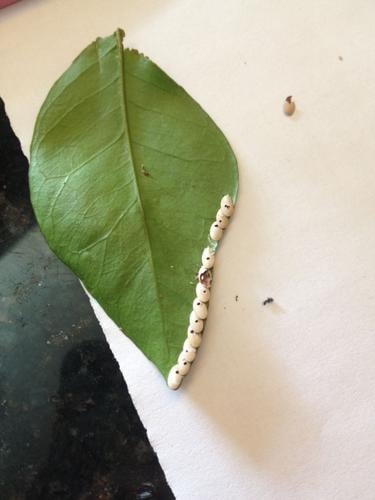Q: Our small HOA is trying to convert to desert or semi-desert landscaping. It’s a fight, as some owners want the same flowers they had back east or in California, but we keep trying. We have a number of old Cyprus trees on the property and have been told that it is OK to disconnect the drip irrigation systems currently watering them because they have a well-established root system that will ensure they get enough water. Do you agree it is OK to not water them any longer? We don’t want them anymore, but can’t afford to cut them down. I’d also like to learn what desert plants you recommend that don’t need regular watering, provide color, and, if it’s not asking too much, what months they bloom?
A: Keep up the good fight for native desert or desert-adapted plants. We can always go visit our old plant friends from other places but it is hard to sustain them here. Cypress trees need water just like everyone else. If you cut off the supply, those trees will eventually die of complications from drought. The problem with just letting them die is they might fall and hurt somebody or something. If they are out in the middle of nowhere that might be okay but I am guessing they are not. There are desert plants that don’t need much water but everything needs some water.
The extreme examples get by with seasonal rainfall but even those plants suffer when we have a drought. There are quite a few choices of shrubs you can use that provide color and don’t require much water. A good online source of information for this is amwua.org/plants and of course you can always chat up your local Cooperative Extension agent, plant nurseries and Master Gardener volunteers about specific plants.
Q: I am writing to see if you have information about peach tree blight. I have two peach trees in Green Valley and both have been affected by a blight that causes the peaches to shrink in size and become inedible. Is there a treatment for this disease? Both trees have produced fruit for many years and are now advanced in age; one tree is 37 years old and the other over 30 years. They both still produce green leaves and fruit.
A: Improper pruning, not enough thinning of fruit, or poor soil fertility, can cause too small fruit. The other factor in your situation is the age of the trees. Peach trees don’t live forever and the average lifespan is around 15 years. I love old trees but if your goal is fruit production, the best thing is to replace your old trees with a couple of younger ones. Peaches typically start producing fruit by age 3 or 4 so if you can’t wait for fresh peaches, select a tree of that age to replace your older trees.
Q: Any idea whose eggs these are? They were on an orange tree in Tucson.
A: Katydid those eggs. Technically, katydids are grasshoppers of the long-horned variety (Family Tettigoniidae) due to their long antennae. They get their name from the noise they make in the evenings that seems to say ka-ty-did if you use your imagination. Because they often resemble the leaves of trees they inhabit, it is difficult to see them unless they move about. Their eggs resemble small seeds and are laid in a nice row on foliage or stems mostly. Like other grasshoppers, katydids feed on foliage although no appreciable damage is done so they are more of a curiosity than a pest.
Q: I have a backyard of Bermuda that is overseeded with annual rye grass. Last year was my first in this house and I moved in during January to find numerous winter weeds sprouting in the over-seeded Bermuda grass. With the recent rains I have the same weeds returning. Will a general-purpose weed and feed fertilizer/herbicide take care of the weeds or should I use another product? When should I apply? Last year I removed the weeds by pulling them out by hand.
A: Without knowing which weeds you are seeing I would guess you are concerned about winter annual broadleaf weeds such as London rocket. These are called winter annuals because they germinate in the fall, survive the winter, and sprout in the spring. Our winter in Tucson being mild and short, these weeds don’t waste time waiting for the vernal equinox and are up and flowering now. The answer to your question is likely yes; any post-emergent broadleaf weed herbicide will take these weeds down. A cautionary note: your trees and shrubs are in the same plant category as your broadleaf weeds so be careful about applying these herbicides on these desired plants and their root zones. In most situations, spot treating your weeds is better than carpeting your lawn with herbicide both for saving your desirable plants and for saving a few bucks on the product.
It is best to treat your weeds now before they go to seed. Be careful to avoid windy days so the herbicide doesn’t drift onto nearby plants and follow any other precautions listed on the label. Pulling weeds is also an option and can be therapeutic, if you have the time and the energy. Finally, keeping your lawn healthy is a good defense against weeds.






